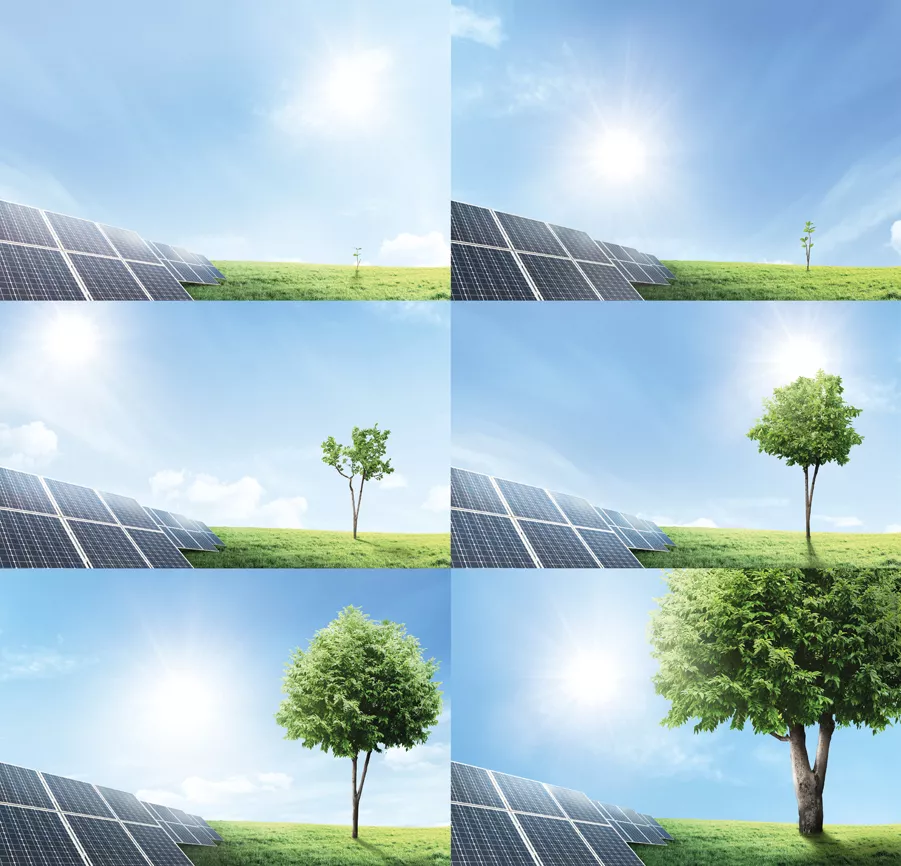The evolution of solar string inverters
Technology touches our lives every day, and technological advancements, both incremental and revolutionary, shape the way we do things. Every day, devices are enhanced with new software capabilities, creating smart doorbells, thermostats, or TVs.
Today's technology is also increasingly integrated, e.g., a smartphone combines a camera, calculator, compass, maps, and so much more into one device, simplifying our lives. With the rise of the internet of things, devices are also more connected than ever, allowing access anywhere via the internet and clouds.

Like
any other technology, solar equipment is evolving too. Solar modules have become more
powerful, more efficient and are on a path to become more intelligent.
Inverters from just ten years ago look very different from modern inverters, as
they got smarter, more integrated, and more connected. Software applications
surrounding solar systems play an increasingly important role to both solar
installers and system owners.
A
solar inverter and its accessories from 2010 were quite complex. They consisted of many components,
such as communications cards, dataloggers, modems, and other accessories. The
inverters themselves were limited in their design flexibility and software
capabilities.
Today,
modern string inverters are more intelligent, more integrated, connected, and
flexible.
A first step in making string inverters smarter and more connected was integrating all data communications into the inverter, such as data loggers, interfaces between inverters, and internet connections. This integration reduced complexity and component count as well as costs. The inverters can now be easily connected to a network and the internet, e.g., via Wi-Fi.
Other advancements happened in the inverters' design flexibility. While past string inverters had limitations in handling complex roof shapes or shading, developers added multiple Maximum Power Point Trackers (MPPT) to the inverters. This feature allows for different module orientations in a system as well as isolating potentially shaded modules. In addition, more expansive DC voltage windows and higher currents allow for strings as small as three modules or long strings if needed. Oversizing capabilities of up to 150% further increase the range of applications a modern string inverter suits.
To further advance design flexibility, string inverter manufacturers developed intelligent software that mitigates the impacts of shade more efficiently and without the need for additional hardware - a significant step in making inverters more innovative and more integrated. This enhanced MPPT software tracks the entire I/V curve of a solar module to ensure operation at the global maximum power point. Such intelligent software algorithms are another example of software beating hardware, providing a better solution at lower costs.
With safety and reliability being the number one buying criteria for solar installers and system buyers, modern string inverters also have an integrated arc fault detection, mitigating the risk of arcing in modules or connectors. Combined with safety features such as anti-Islanding protection, ground fault protection, insulation monitoring, and easy field-serviceability, modern string inverters are a safe and reliable inverter technology.
So,
what defines a modern string inverter?
- A
modern string inverter is a smart, integrated, connected inverter that
satisfies solar installers and system owners' needs.
- Smart
means that software features
provide shade mitigation, arc fault detection, and granular monitoring
capabilities.
- Integrated
means that critical functions such
as MPP tracking, shade mitigation, and safety features are integrated into the
inverter to minimize the number of components needed in a system.
- And connected means that a multitude of interfaces allow the inverter to communicate with other parts of the system, with other systems (e.g., energy management or home automation), and of course, with the internet for cloud-based monitoring.
With all that, keep this evolution in mind when searching for an inverter for your next project.
